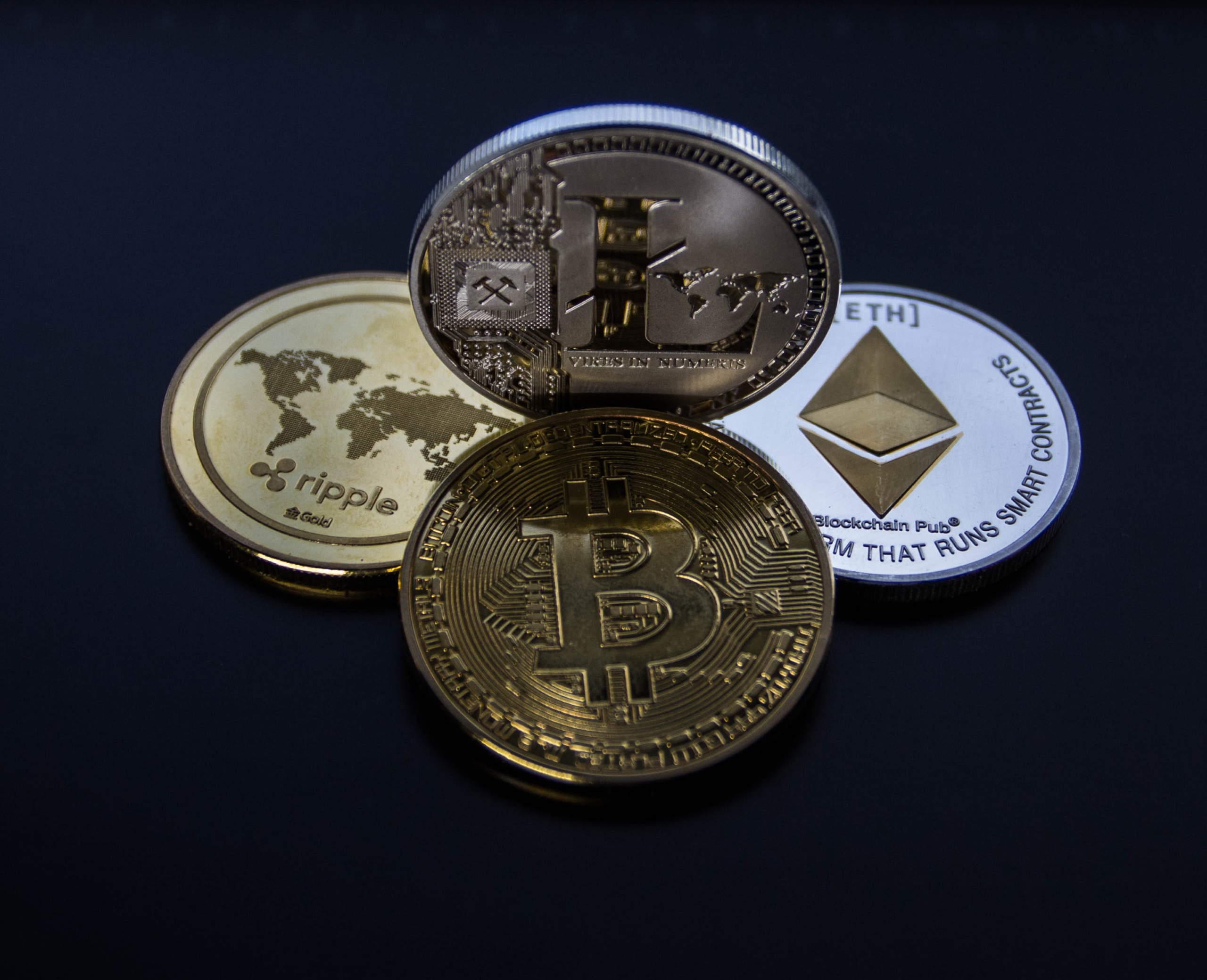Cryptocurrencies or “digital currencies” are making big headlines all across the globe. Some of the others are among the hottest topic discussed in social media and investment networks. Numerous people turned their life 180 degrees by conquering the highly volatile crypto market that keeps fluctuating.
Thousands of cryptocurrencies are out there in the market, making it quite a bit overwhelming to enter the space. Starting out in the world of cryptocurrencies can be a tough job, so to help you get your bearing, you might want to consider these top cryptocurrencies sorted by MarketCap.
Litecoin (LTC)
Founded 2 years after the technological paradigm of Bitcoin was launched in the market, Litecoin stands as the ninth-largest cryptocurrency when it comes to market capitalization. Litecoin was made known in the market in 2011 by former Google engineer Charlie Lee.
This altcoin was designed from a model of Bitcoin’s source code, which makes it technically an entirely new blockchain without a partitioned genesis block. It is pretty similar to Bitcoin, however, with a higher transaction output and faster block times compared to it.
Namecoin (NMC)
Similar to Litecoin, Namecoin is a Bitcoin-derived altcoin that aims to establish a domain name service according to blockchain technology. This cryptocurrency was the first-ever coin to imitate Bitcoin’s code to design an alternative digital currency through its main features— with a little bit of a twist, an identity system that stores identity information.
The altcoin is has matured into a really successful project that aims to be more than just a simple cryptocurrency. Namecoin has an engaged community boasting blockchain technology’s capability of evolving way beyond the economic system.
Ripple (XRP)
Developed by Ripple Labs, XRP is a native cryptocurrency designed for payment settlement, remittance, and asset exchange. XRP can be utilized in facilitating the exchanges of various currency types (e.g., fiat currency and other cryptocurrencies).
Compared to Satoshi’s Bitcoin— which has a very intensive and complicated nature of mining used in cryptocurrency— the transactions in XRP are faster and only take a few minutes to be confirmed. XRP transactions also have a very lesser cost.
Dogecoin (DOGE)
Dogecoin heated social media and news headlines thanks to famous billionaire Elon Musk, who openly showed his admiration for the coin. The well-crazed coin initially ventured to the cryptocurrency space featuring a ‘doge’ internet meme with Shiba Inu on its insignia.
Who would expect a meme cryptocurrency to be a prominent crypto option? Probably, little to no one. Yet, it did conquer the cryptocurrency market with its creative meme and committed community. However, unlike other popular altcoins, Dogecoin has no restricted number of coins that can be created, making it vulnerable to devaluation.
Monero (XMR)
Monero rose to popularity because of its anonymity and privacy. However, this supposed privacy protection was getting taken advantage of by online outlaws, posing a big threat to law enforcement.
While some experts view Monero as a crypto choice for cybercriminals, some see it as a good privacy coin because of its high levels of user protection. This privacy focused-coin has earned a crown for its privacy-focused design, giving it more chances to strive in the future.
Dash (DASH)
Dash is a scalable digital payment system that offers cheap and fast payments all over the globe. It initially aimed to become a privacy-focused coin like Monero but transitioned into another goal. It now seeks to become a currency that mediums daily transactions, which can be used in credit cards, PayPal, or cash.
Dash, previously coined Darkcoin was launched in 2015 by Evan Duffield and Daniel Diaz. Currently, this altcoin is an open-source project that includes a decentralized payment network.
Ethereum (ETH)
Ethereum is also called a “developer’s favorite” since it isn’t just a simple cryptocurrency, but also a blockchain platform that can create applications through smart contracts that automatically execute actions when conditions are met. This open-sourced blockchain is now as big as Bitcoin.
ETH was the pioneer of blockchain smart contract innovation and is considered are one of the best performing cryptocurrencies in the market worldwide. It is used to either send or receive money for goods and services rendered. Moreover, it powered digital applications, allowing users to play games, send money, invest, and track investment portfolios.
Stellar Lumens (XLM)
The stellar network was initially formed way back in 2014 by the co-founder of Ripple Jed McCaleb in partnership with a former lawyer Joyce Kim on a website called The Secret Bitcoin Project. A year later, McCaleb officially launched it to the public.
Stellar Lumens is a decentralized open network for money that is suitable for blatant and effective trading of cryptocurrency, where users can send, pay, trade, and create digital depictions in any form of fiat money, as well as other cryptocurrencies. Similar to Dash, Stellar made it their goal to be a payment solution of worldwide mobile currency.
Steem (STEEM)
This blockchain-based social media model brings the features of blockchain to online social media networking. Steem facilitates the construction of social media decentralized applications that reward users with cryptocurrency.
What makes Steem interestingly fascinating and unique is the incentivized system that empowers users to become shareholders, earning value for producing and publishing content on Steem-based social applications.
Bitcoin Cash (BCH)
Bitcoin Cash was the upshot of Bitcoin’s hard fork in 2017. BCH was a solution that Bitcoin masterminds come up with to solve long-standing issues within the crypto, but it eventually caused a rift in Bitcoin’s community. Although Bitcoin and Bitcoin Cash can co-exist, many argue over which one will strive in the coming years ahead.
Just like Bitcoin, Bitcoin Cash can be bought on PayPal, and it represents another way of transacting value. Although it’s rising into fame within the crypto community, BCH is yet to be kenned outside the crypto space.
Waves (WAVES)
Designed to enable the creation and launch of custom-made crypto tokens, Waves blockchain is a good investment that can make a profit margin for investors.
Waves has an open-source technology intended for decentralized applications that are typically used for products with high security. Rather than complicated smart contract programming, tokens can be generated and managed through scripts that run on Waves blockchain.
Steem (STEEM)
Tether is a stablecoin, backed by fiat currencies (e.g., Euro or U.S. dollars), unlike other famous forms of cryptocurrency. Every Tether is equal to the value of any real-world denominations, making Tether’s value theoretically more consistent compared to other cryptocurrencies in the space.
Investing in Tether is favorable to those who want to stay away from the excessive volatility of other cryptos.
Bitcoin Gold (BTG)
Famous for its innovative features and solid technical base, Bitcoin Gold is surely something investors should keep an eye on. Although it has smaller mooning potential compared to previously mentioned tokens and coins, Bitcoin Gold can be a really profitable purchase.
Bitcoin Gold was another folk outcome, like Bitcoin Cash, that has a purpose to make Bitcoin decentralized again. BTG sought to increase users’ anonymity by not publicizing transaction details of wallet addresses.
Cardano (ADA)
Although Cardano is a bit late to enter the crypto scene, it became one of the biggest crypto names for its early adoption embrace of proof-of-stake validation. Through PoS, transaction time and energy requirement decrease drastically.
Just like Ethereum, Cardano enables decentralized applications and smart contracts. Cardano is powered by ADA, which is its native coin.
IOTA (MIOTA)
IOTA sprang to life as a simple hardware project that is intended to produce general-purpose, as well as low-cost processors. Just like some of the cryptocurrencies that rest in the cryptocurrency space, IOTA aimed to solve the performance issues and scalability problem of Bitcoin. The solution they come up with is Tangle.
Tangle is a system of nodes where new transactions sanction two prior transactions. Through this Internet of Things (IoT) ecosystem, various devices can exchange payment information and data with multiple other devices. IOTA doesn’t use blockchain to facilitate transactions, but its performance is super— transactions are fast and get even faster as more people use them.



